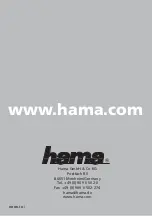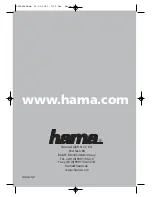
DynaQuip Controls • 10 Harris Industrial Park • St. Clair, MO 63077
Tel. 800-545-3636 • Fax. 636-629-5528 • www.watercop.com
10
Choose a dry location to install the WaterCop
®
. The front control panel should be easily visible in order to
see what position the valve is in (open/closed) and accessible for resetting after a leak has been detected
and corrected, and for checking and resetting the radio receiver code if necessary . Place the valve where
the housing is protected from use as a step or other excessive loads . The shut-off valve must be installed:
•
In the main water line;
•
Just downstream from the main water shut-off valve;
•
In a dry location (indoors only);
•
Where it is accessible for checking and resetting the valve and for resetting the radio receiver code, if necessary; and
•
Where the case is protected from use as a step or other excessive loads .
Caution:
Never use the housing for leverage when mounting this unit or tightening fittings. Use a wrench on
the valve flats that are provided.
Caution:
High heat from soldering or brazing can damage valve seats or motor housing. Proper precautions
should be taken to prevent damage from heat when installing the unit. Remove plastic housing before
soldering valve in place.
Additional Part Requirements
Installation of the WaterCop
®
will require additional parts . When the main supply line is cut to accommodate the
WaterCop
®
, new fittings will be needed to connect the ends of the piping to the WaterCop
®
valve .
The type of connecting fittings to use will be determined by the type of existing piping, local plumbing codes, and
“industry standard practices .”
The most common material for water supply lines is copper . If the WaterCop
®
is to be installed in a copper line, you still
have a choice of fittings and methods of installation .
Compression Fittings
The unit can be installed with compression fittings using common household tools and basic mechanical ability . You will need:
a) 2 fittings (male pipe thread x compression)
d) Ruler
available at most local hardware or plumbing supply stores
e) Pencil or marker
b) Teflon
®
tape or other thread sealant
f) 2 large adjustable wrenches
c) Tubing cutter
Measure the outside diameter of the copper tube and note the valve size to be sure you purchase the proper size fittings
for the job .
1 . Remove nuts and sleeves from compression fittings and install the fittings into each end of the valve using Teflon
®
tape or other thread sealant to ensure a watertight seal . Hold one wrench on flats of valve body and use the other to
tighten fittings .
2 . Measure the distance from end to end of valve assembly . For 1/2” tube (5/8” outside diameter) subtract 1/2”, for 3/4”
tube (7/8” outside diameter) subtract 3/4” from your measurement . This is the length of the section of tubing to be
cut out of the existing line . The piece of existing tubing to be cut out is shorter than the measured length so that tube
ends extend into the compression fittings .
3 . Select the location for the WaterCop
®
. Be sure to consider that you will need access to the front panel of the control
unit . After cutting the section of tube out of the line, you will need to shift the tube ends to be able to fit the unit into
place . Make sure you will have access and room to adjust before you cut the tube .
4 . Mark the tube in the location you have selected . Double check the length and location you marked .
5 . Turn water off and drain the system .
6 . Use tube cutter to cut copper tube at the locations you marked . Careful, there will probably still be some water
in the line .
7 . Remove any burrs from the tube ends and clean ends .
WARNING
DO NOT USE ON FIRE
SPRINKLER SYSTEMS






























